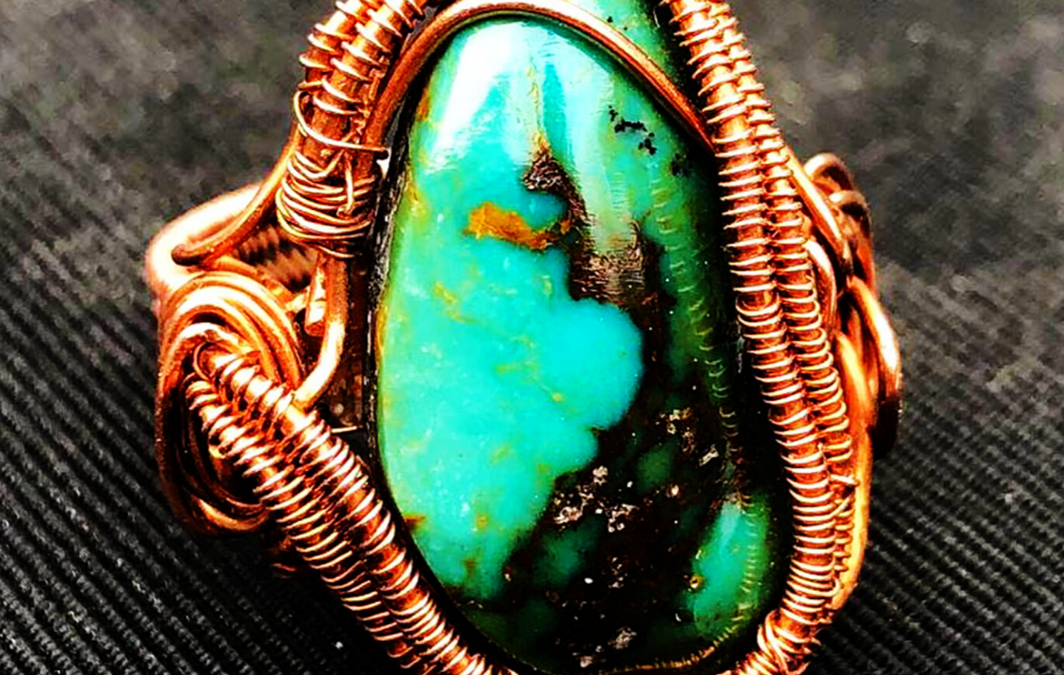Is Your Jewelry Box Full of Genuine Turquoise or Fake Turquoise?
We all have those treasured pieces handed down from our mom or grandmother. Sometimes it’s hard to know if pieces are real or costume. While nothing can replace the sentimental value of those things, if you’re considering having them repurposed into a piece you can wear, or if it’s broken and you want to have it repaired, knowing if it’s genuine or not could come in handy.
Whether you’re looking to find out more about an inherited piece or thinking about purchasing some pieces yourself, educate yourself on how to tell the difference. If purchasing yourself, think about it, which would you rather have if pricing was close to the same, an original Louis Vuitton bag or a knockoff? Crazy question, right? But with gemstones, many people are walking around with imitations, thinking it’s the real thing. Because of its popularity, turquoise is one of the most copied stones around. If you are ready to make a purchase, how can you tell if turquoise is real?
I’ve always had a fascination with turquoise. Maybe because of fond, childhood memories of pieces my mother purchased on our travels out west. I would stand next to her at the counter of some small shop along the road, amazed at the beautiful and unique stones. Each had its own veining and color variations.
What a Compliment
A gentleman, visiting my table at an event, studied the trays filled with pendants. He looked at me and said, “It’s good to see someone who has real turquoise.” My first thought was, “What an amazing compliment.” My second thought was, “What a shame it needed to be said.” I’ve come across multiple stores, shops, and vendors selling “turquoise”, who really aren’t. In their defense, they truly may not know. The piece may be labeled turquoise because of the color, but customers purchasing it may think they are buying a genuine turquoise stone.
Spotting a Fake
Some imitations like glass and plastic are easy to spot: The weight is “off’, it has an unnatural shine to it, etc. Others, made by dying a different stone to look like turquoise, are more difficult. Some “turquoise” is really powdered stone attached around a rock with epoxy.
The necklace above is lapis, turquoise & howlite. Can you tell which is which? The smaller stones on the chain are genuine turquoise. The barrel-shaped stones on the bottom are howlite, dyed to look like turquoise.
Some tips to help you know if you have the “real deal”- how to tell if turquoise is real:
Uniform Color
Real turquoise normally has shade and hue variations. Dyed pieces will have a consistent color and may have streaks.
Hot Needle Test
Stones made of plastic or covered in epoxy will begin to melt or put off an odor.
The Nail Test
Run your fingernail along the cracks (veins) of the stone. Real turquoise will have ridges, even if they are very slight. Fake will normally be smooth.
I See Spots
Dyed stones, naturally, start as a different color, normally white. Howlite and magnesite are the two main stones used to create imitations. Look at the stone or at the hole drilled into the stone, through a magnifying glass. Are there flecks of white or tan? That is the original stone color where it did not take the dye.
Unpolish It
Wipe the stone with acetone (nail polish remover). If the appearance has changed, it has been dyed or treated.
You Get What You Pay For
Price is not always a telling factor but can be. Because of my love of natural stones, I work hard to source genuine stones at amazing prices so everyone can enjoy them. Not everyone is able to do that. Genuine turquoise will normally be more expensive than imitations, but still affordable. Make sure you buy from someone you trust.
Click here to learn more about the properties and traditional uses of turquoise.
Genuine Persian Turquoise
Losing my son brought back my desire to design jewelry. It became a therapy for me and a way to share one of his loves, natural stones, with others. After many months of feeling very drawn to turquoise, I realized it was one of his birthstones. I have been lucky enough to come into contact with others who loved the stone and who have collected it for years but were now ready to let some of their precious stash go. Because of that, I am able to bring my customers beautiful stones at amazing prices. There is nothing wrong with adoring imitation pieces. There are some beautiful designs out there. But I want to ensure that if you are searching for genuine stones, you know how to tell if turquoise is fake.
To learn more about other stones, or just to see some beautiful genuine turquoise pieces, visit WV3Designs.com
If you are facing your own life change, visit NavigatingLifeChanges.com for resources and helpful tips.













I heard of a test you lay a head hair on the stone & touch a lit cigarette to the hair if real it will not burn. Is this true?